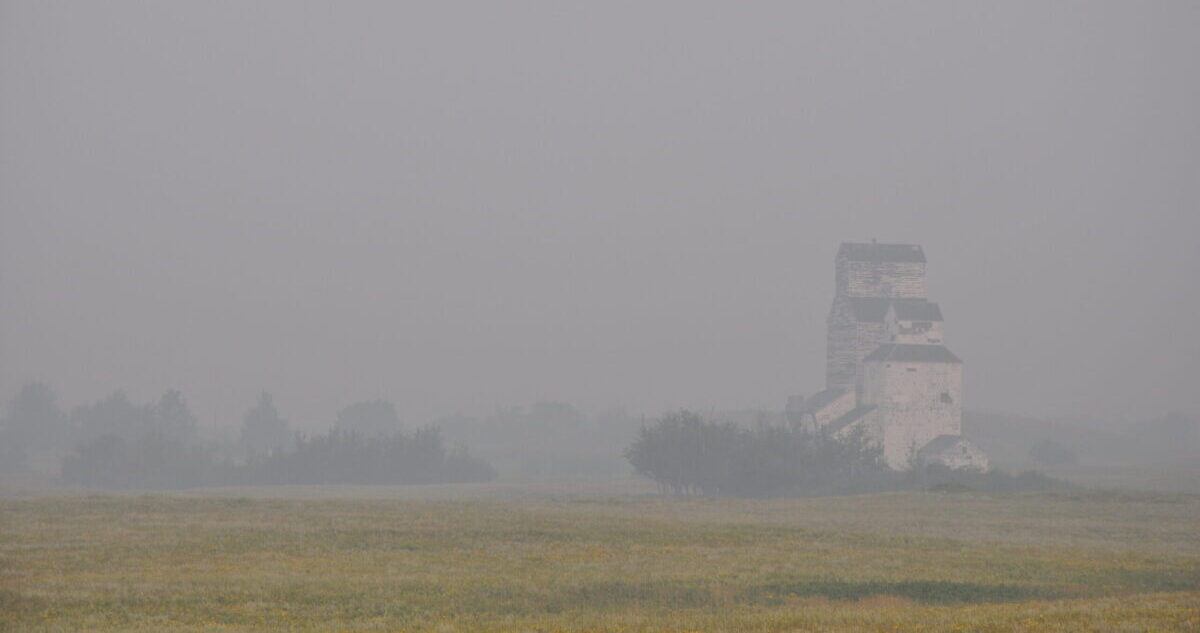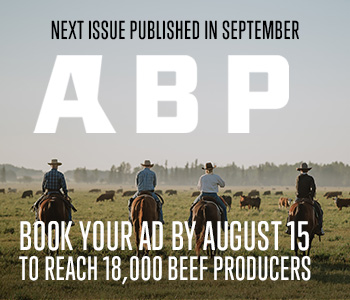AB Direct - Steers
Rail: 495.00-500.00 del
AB Direct - Heifers
Rail: 495.00-500.00 del
US Trade- Steers
Rail: ---
US Trade - Heifers
Rail: ---
Canadian Dollar
0.12

Effects of smoke inhalation on beef cattle
Drifting smoke caused by massive wildfires has been a greater problem in Alberta this summer than ever before. We spoke to veterinarian Dr. Roy Lewis about how inhaling smoke might be affecting beef herd health.
Following a record-breaking wildfire season in Canada, in which as much as two million hectares of land were destroyed in the province of Alberta alone, the effects of smoke inhalation have been on the minds of many people.
The presence of smoke has been significant enough that the news now often reports particulate matter (PM) levels, advising people when to stay indoors. But how has all the smoke impacted beef herds, which remain outdoors throughout the grazing season?
While no clear research data has calculated the effects of smoke inhalation on beef cattle in Canada, veterinarian Dr. Roy Lewis has extrapolated probable effects from a research study conducted in the U.S. “Animal science researchers in Idaho looked at the production of dairy cattle affected by wildfire smoke, and found that milk production decreased during exposure, and that these effects continued after the smoke had cleared,” he says.
The study quantified long-term exposure and production losses, finding that it took about a week for cows to recover their milk production after smoke decreased to acceptable levels. “The immune system was affected, and the production of milk was affected. Findings included a reduction in hemoglobin and an increase in inflammatory indicators such as white blood cell count,” says Lewis.
The potential harm associated with smoke in the air is measured according to the PM level, which affects the respiratory system. Depending on the type of fire, the smoke may carry toxins such as carbon dioxide and monoxide, nitrous dioxide, and hydrocarbons, all of which can negatively affect breathing.
A key finding in the Idaho study was identifying that particulate matter at or above 35ugPM 2.5 had negative effects on animal production. “Particulate matter at the level of 2.5 is breathed in and essentially clogs up the lungs, setting up inflammation and causing long-term damage,” says Lewis. “For every 100ug increase in particulate matter, the study identified a 1.2 kg decrease in milk production.”
Extrapolating those results to beef cattle herds, Lewis suggests issues in mature cattle will likely vary depending on where they are in the calving, milking, and rebreeding cycle. “Producers should expect that milk production will likely drop in milking cows. And watch for signs of stress-related diseases and pneumonia in calves especially,” he advises.
Smoke inhalation may also affect the growth of calves – not only will they be dealing with the smoke themselves, but they also may receive less milk from their mothers. “Producers should be aware that they will likely have more respiratory infections and pneumonia cases to treat.”
Lewis suggests producers document any changes they find in the herd as a result of smoke inhalation, and consider both the intensity and duration of exposure. The dairy cows followed by the Idaho study were housed inside for seven days with high levels of smoke in the area, while Alberta’s beef cattle are kept outside all season long.
Another watchout is that herds exposed to smoke over an extended period may have lower fertility rates. “We all know that when a treated calf recovers from pneumonia, they often have some permanent lung damage, resulting in lower lifetime productivity. That may occur in some animals following this season.”
Looking forward, producers can begin to follow particulate matter readings offered through weather channels to help them predict possible health and growth changes affecting animals in their care. “The longer the animals are exposed to particulate matter in the air, the greater the effects we might expect to see,” Lewis concludes.
This article was first published in Volume 3 Issue 3 of ABP Magazine (September 2023). Watch for more digital content from the magazine on ABP Daily.


